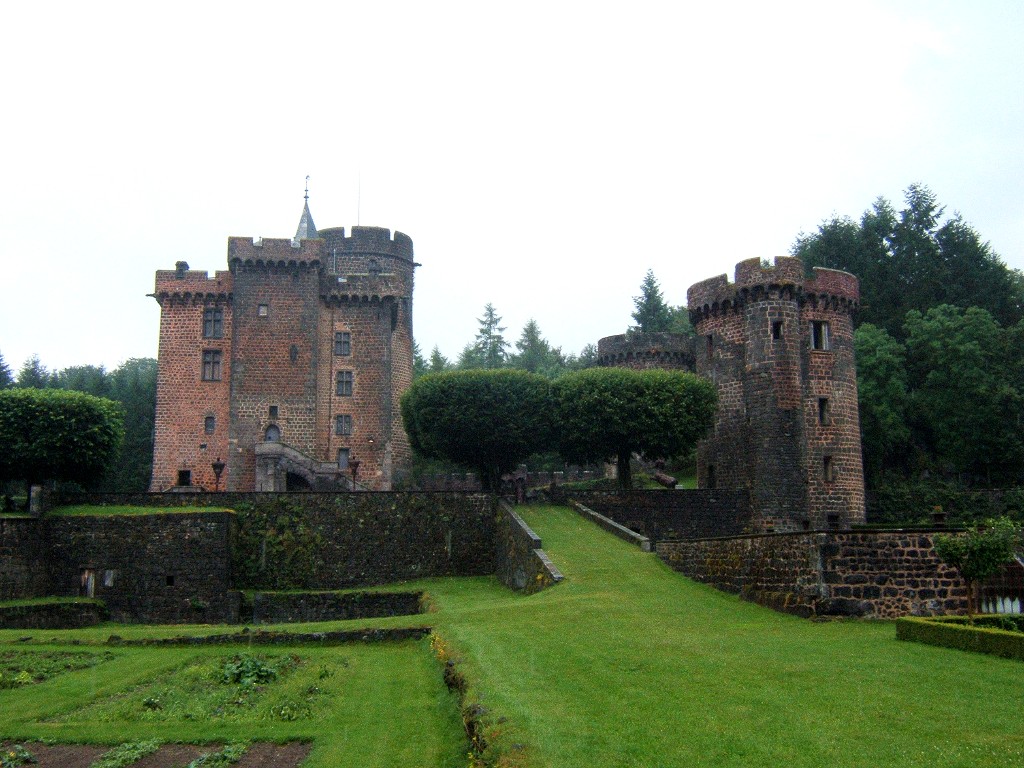Château-Dauphin on:
[Wikipedia]
[Google]
[Amazon]
 Château-Dauphin is a medieval
Château-Dauphin is a medieval
Official site of the Château Dauphin
Castles in Auvergne-Rhône-Alpes Monuments historiques of Puy-de-Dôme Museums in Puy-de-Dôme {{France-castle-stub
castle
A castle is a type of fortified structure built during the Middle Ages predominantly by the nobility or royalty and by military orders. Scholars debate the scope of the word ''castle'', but usually consider it to be the private fortified r ...
in the '' commune'' of Pontgibaud in the Puy-de-Dôme '' département'' of France.
History
The castle owes its name to the coat of arms of the person who built it in the 12th century:Robert I Robert I may refer to:
*Robert I, Duke of Neustria (697–748)
*Robert I of France (866–923), King of France, 922–923, rebelled against Charles the Simple
*Rollo, Duke of Normandy (c. 846 – c. 930; reigned 911–927)
* Robert I Archbishop of ...
, Count of Auvergne, on whose arms was a dolphin (''dauphin''). The original construction was modified in the 15th century by Gilbert III Motier de La Fayette, who strengthened the defences and enlarged the keep
A keep (from the Middle English ''kype'') is a type of fortified tower built within castles during the Middle Ages by European nobility. Scholars have debated the scope of the word ''keep'', but usually consider it to refer to large towers in c ...
. Abandoned in the 17th century for a more comfortable building, and damaged during the French Revolution, the castle was finally restored in the 19th century by Count César III of Pontgibaud.
The castle has been occupied since 1756 by the family of a King's musketeer
A musketeer (french: mousquetaire) was a type of soldier equipped with a musket. Musketeers were an important part of early modern warfare particularly in Europe as they normally comprised the majority of their infantry. The musketeer was a pre ...
, César I de Moré. The present owners, the Count and Countess Gabriel de Germiny, are his descendants. The castle, garden and museum are open to the public.
Architecture
The main building is a doublekeep
A keep (from the Middle English ''kype'') is a type of fortified tower built within castles during the Middle Ages by European nobility. Scholars have debated the scope of the word ''keep'', but usually consider it to refer to large towers in c ...
. In effect, a round keep forms one of the corners of a strong square keep. The two parts are independent. The square keep is articulated around an interior court, covered in the 19th century by a glass canopy. The fortified curtain wall includes seven towers, of which six stand today. The castle includes a kitchen garden known from records of the 16th century. It was restored in the 18th century. There is also a museum dedicated to silver mining in the canton of Pontgibaud, mostly in the second half of the 19th century by the Société des mines et fonderies de Pontgibaud
The Société des mines et fonderies de Pontgibaud (Pontgibaud Mine & Foundry Company) was a French silver and lead mining and smelting company based in Pontgibaud, Puy-de-Dôme. It mined lead-silver ore deposits that had been exploited since Roma ...
.
Château-Dauphin has been classified and declassified as ''monument historique
''Monument historique'' () is a designation given to some national heritage sites in France. It may also refer to the state procedure in France by which National Heritage protection is extended to a building, a specific part of a building, a coll ...
'' by the French Ministry of Culture at various times since 1889. It was finally classified in 1995, covering the castle itself, six towers, common lands, the ground, well and fountain. The kitchen garden is also classified.
See also
* List of castles in FranceReferences
External links
* *Official site of the Château Dauphin
Castles in Auvergne-Rhône-Alpes Monuments historiques of Puy-de-Dôme Museums in Puy-de-Dôme {{France-castle-stub